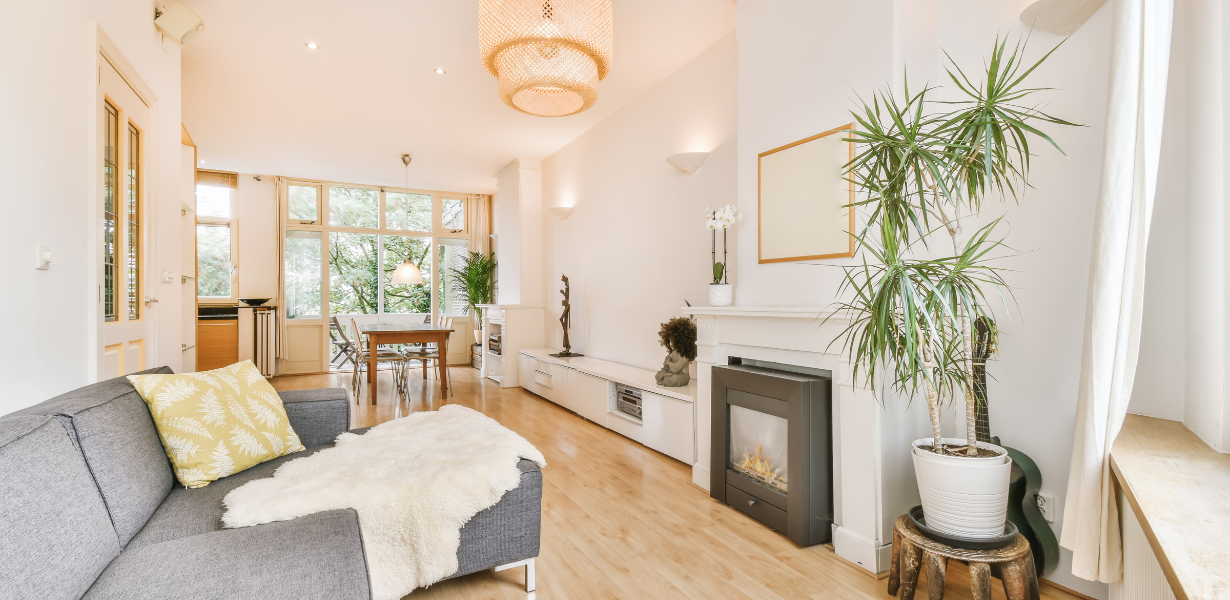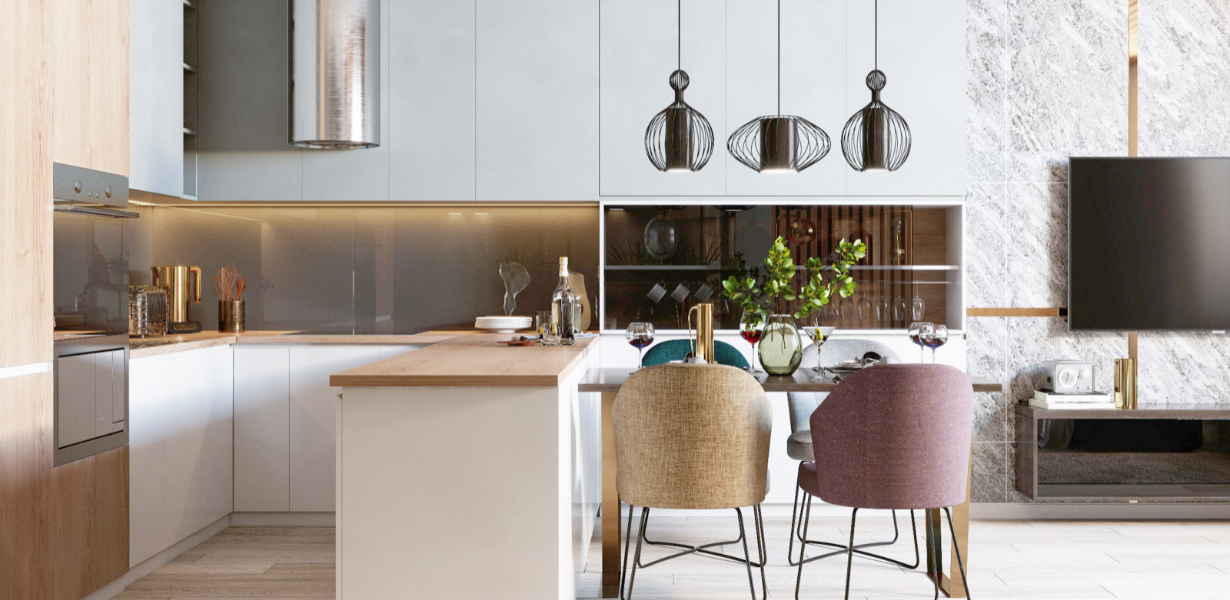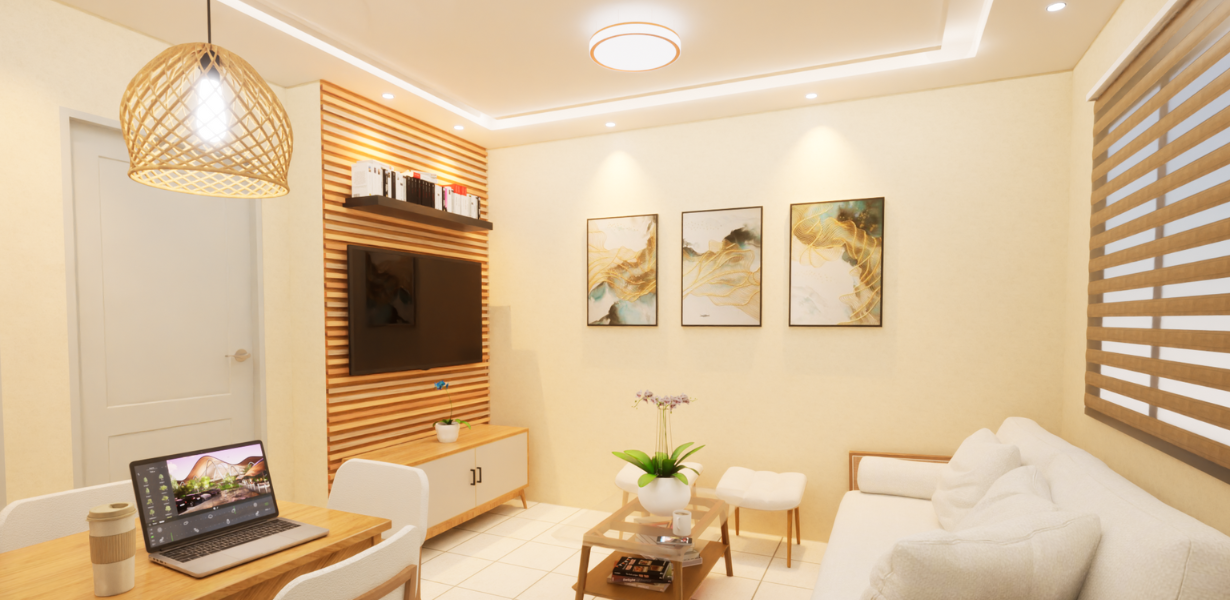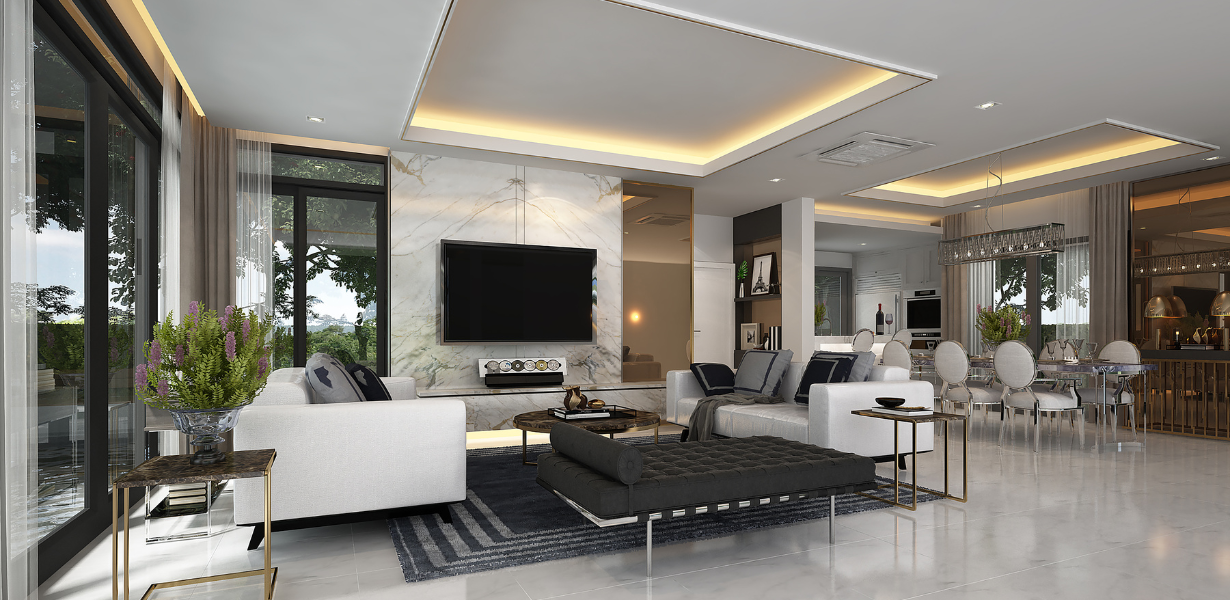In the constantly changing realm of interior design, the idea of modernity persists in molding and redefining our perceptions of living spaces. With a fusion of innovation, functionality, and aesthetics, modern home interior design embarks on a journey that marries contemporary elements with individual tastes.
To navigate this realm effectively, experts in the field are sharing invaluable insights to help transform homes into modern havens. Here are five key tips for crafting a modern interior design that resonates with style and functionality.
Embrace Minimalistic Elegance:

The hallmark of modern home interior design often lies in its minimalist approach. Embrace the mantra of “less is more.” Opt for clean lines, uncluttered spaces, and neutral color palettes to create an atmosphere of serenity and sophistication. Minimalistic designs exude a sense of openness, allowing the eye to move freely without distractions. Consider sleek furniture, streamlined décor pieces, and ample negative space to balance simplicity and elegance.
Incorporate Functional Furniture:

Modern design is not solely about aesthetics; it heavily emphasizes functionality. Consider investing in furniture that multitasks or provides intelligent storage solutions while maintaining a stylish aesthetic. Multifunctional sofas with built-in storage, extendable dining tables, and modular furniture are excellent choices to optimize space while maintaining a contemporary appeal. Additionally, prioritize comfort alongside functionality to create a welcoming and livable environment.
Play with Textures and Materials:

Texture and material selection play pivotal roles in modern interior design. Experiment with various textures, such as smooth metals, natural woods, plush fabrics, and tactile finishes, to add depth and visual interest to your space. Mix and match materials judiciously to create a dynamic ambiance. Incorporating elements like glass, concrete, or stone alongside warmer textures like wool or velvet can infuse a space with a modern yet inviting feel.
Illuminate with Strategic Lighting:

The lighting in a room plays a pivotal role in shaping the mood and ambiance significantly. Implement a multi-tiered lighting arrangement that blends ambient, task, and accent lighting to effectively illuminate various areas. Opt for sleek, contemporary fixtures that complement the overall design scheme. Consider integrating intelligent lighting systems to control intensity and ambiance, providing flexibility for various activities and occasions.
Infuse Personal Style with Art and Accents:

While embracing modern design principles, infuse your personal touch by incorporating art pieces and accents that reflect your personality and interests. Artwork, statement décor items, or unique accessories serve as focal points, adding character and warmth to the space. Experiment with bold patterns, pops of color, or eclectic elements to create visual intrigue and a personalized atmosphere within the modern framework.
Implementing these expert tips in modern home interior design can revolutionize the way spaces are perceived and experienced. The fusion of functionality, aesthetics, and individuality creates a harmonious balance, elevating the ambiance of any home.
In conclusion, modern home interior design is a canvas that allows for creative expression while embracing contemporary sensibilities. Homeowners can curate spaces that resonate with modernity and comfort by integrating minimalism, functionality, texture, strategic lighting, and personal style.
The crucial factor involves a deliberate blending of these elements to create an environment that not only presents visual charm but also addresses the requirements and lifestyles of those who dwell within.
Unlock the potential of your living space by employing these expert tips in modern home interior design and witness the transformation of your home into a stylish and functional sanctuary.
FAQs on Modern Home Interior Design
Q1. What defines modern home interior design?
Modern home interior design is marked by sleek lines, a commitment to minimalism, and a strong emphasis on functionality. It often incorporates neutral color palettes, sleek furniture, and a balance between simplicity and elegance.
Q2. How can I achieve a minimalist look in my home?
To achieve a minimalist look, declutter your space and opt for furniture with simple, clean lines. Choose a neutral color palette, incorporate multifunctional furniture, and embrace an open layout to create a sense of spaciousness.
Q3. What are some key elements of modern furniture?
Modern furniture features clean lines, simplicity, and functionality. Look for pieces with geometric shapes, smooth surfaces, and innovative designs. Multifunctional furniture that serves dual purposes is also a hallmark of modern interior design.
Q4. How can I incorporate texture into a modern design?
To add texture to a modern setting, experiment with a variety of materials such as metal, wood, glass, and textiles. Mix smooth surfaces with tactile finishes, and consider using contrasting materials to create visual interest while maintaining a contemporary aesthetic.
Q5. What is a layered lighting scheme, and why is it important in modern design?
A well-lit and dynamic space is achieved through the integration of various lighting types, including ambient, task, and accent lighting, in a layered lighting scheme. This approach is essential in modern design to highlight architectural features, create mood, and adapt lighting to various activities.
Q6. How can I personalize my modern interior design without compromising its style?
Infuse personal style by incorporating artwork, unique décor pieces, or accessories that reflect your personality and interests. Explore vibrant patterns or bursts of color within the modern context to infuse personality and warmth into the environment.
Q7. Are there specific color schemes associated with modern home interior design?
Modern design often features neutral color palettes, including whites, grays, and earth tones. However, pops of bold colors can be introduced through accent pieces or artwork to add vibrancy and personality to the space.
Q8. What role does smart technology play in modern home interior design?
Innovative technology can enhance the modern living experience by allowing control over lighting, temperature, and other home systems. Integrating smart devices can provide flexibility and convenience, aligning with the contemporary emphasis on functionality and innovation.
Q9. Can I mix different design styles with modern interior design?
Yes, modern interior design exhibits versatility. By adhering to modern principles, one has the flexibility to integrate elements from various styles, including industrial, mid-century modern, or eclectic, resulting in a distinctive and personalized living space.
Q10. How can I create a cohesive modern design throughout my entire home?
To achieve a cohesive look, maintain a consistent color palette and design theme across different rooms. Use similar materials and finishes, and ensure that furniture styles complement each other. This creates a harmonious flow throughout the entire home.

